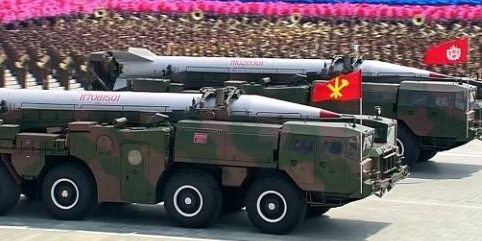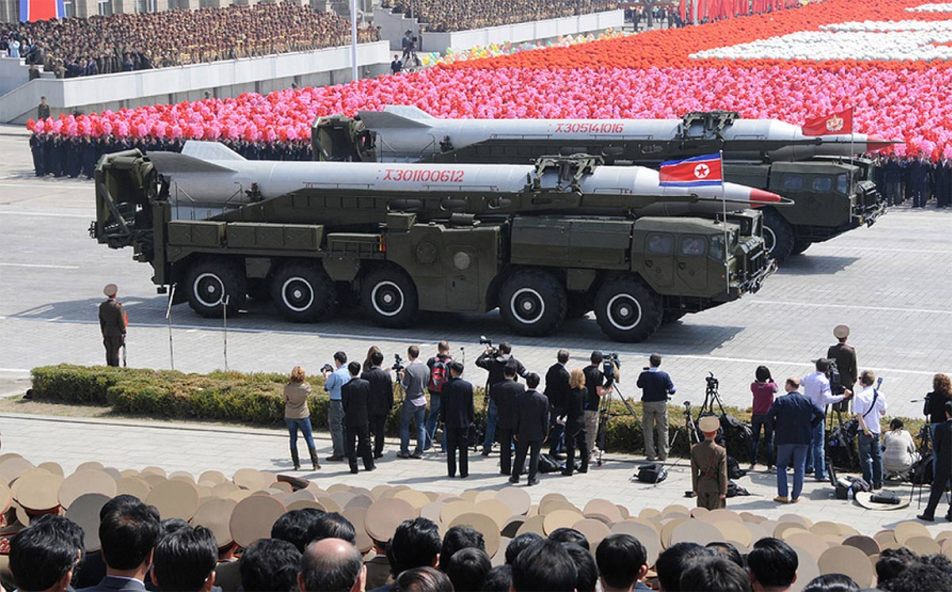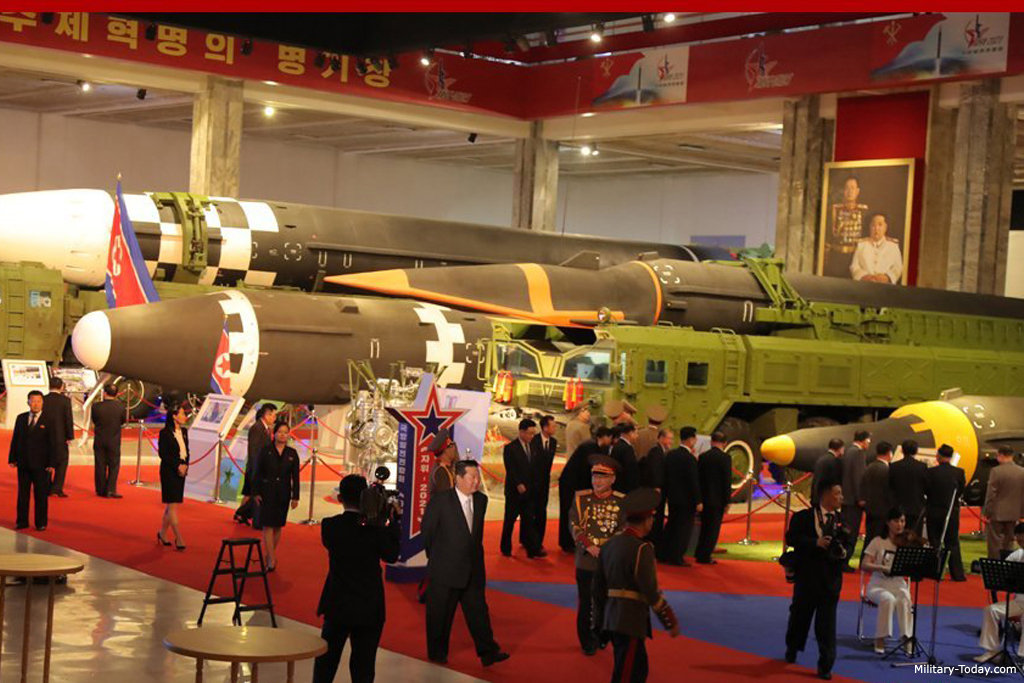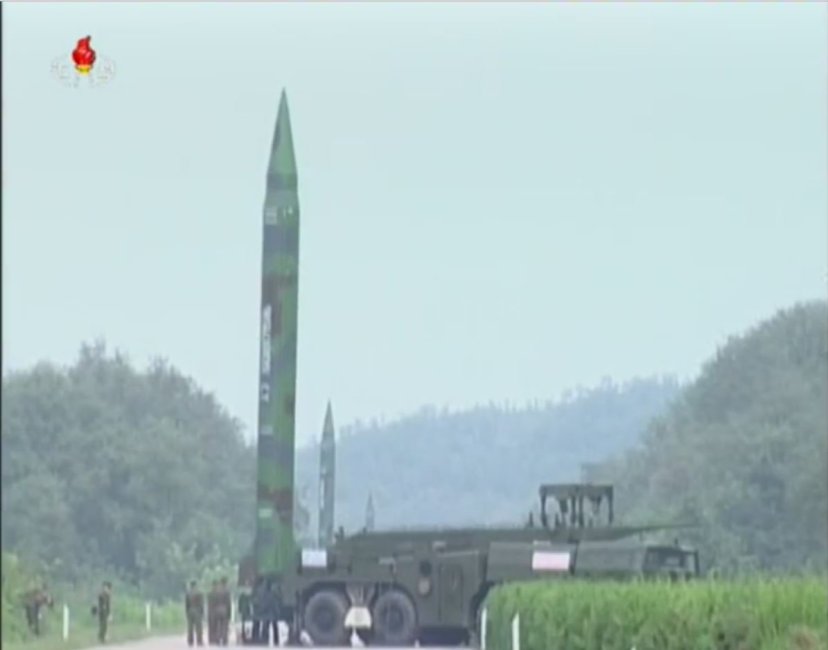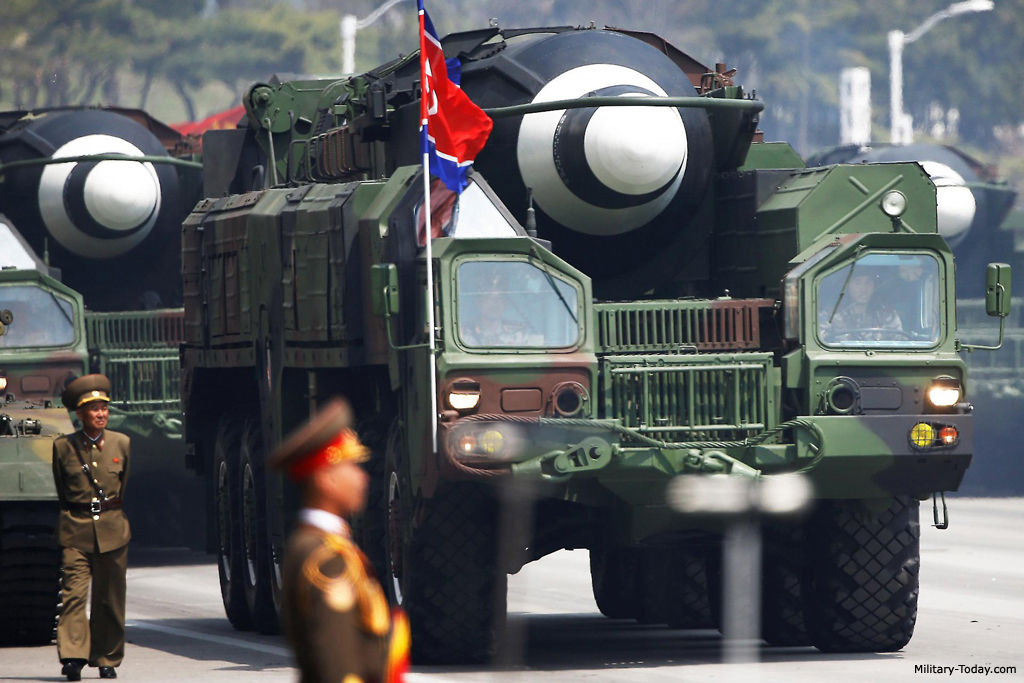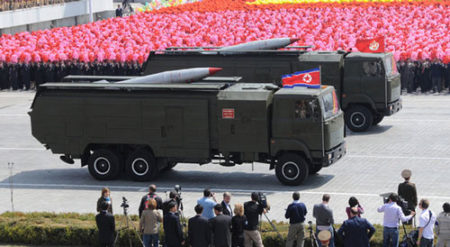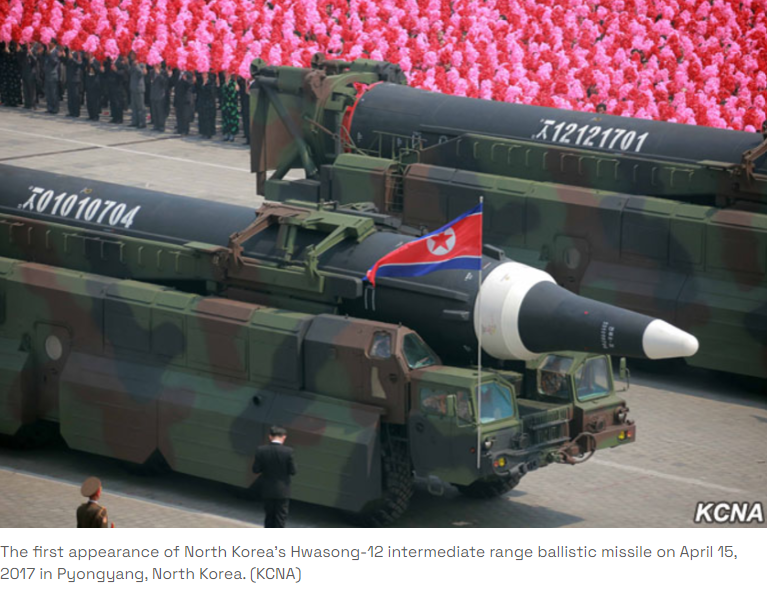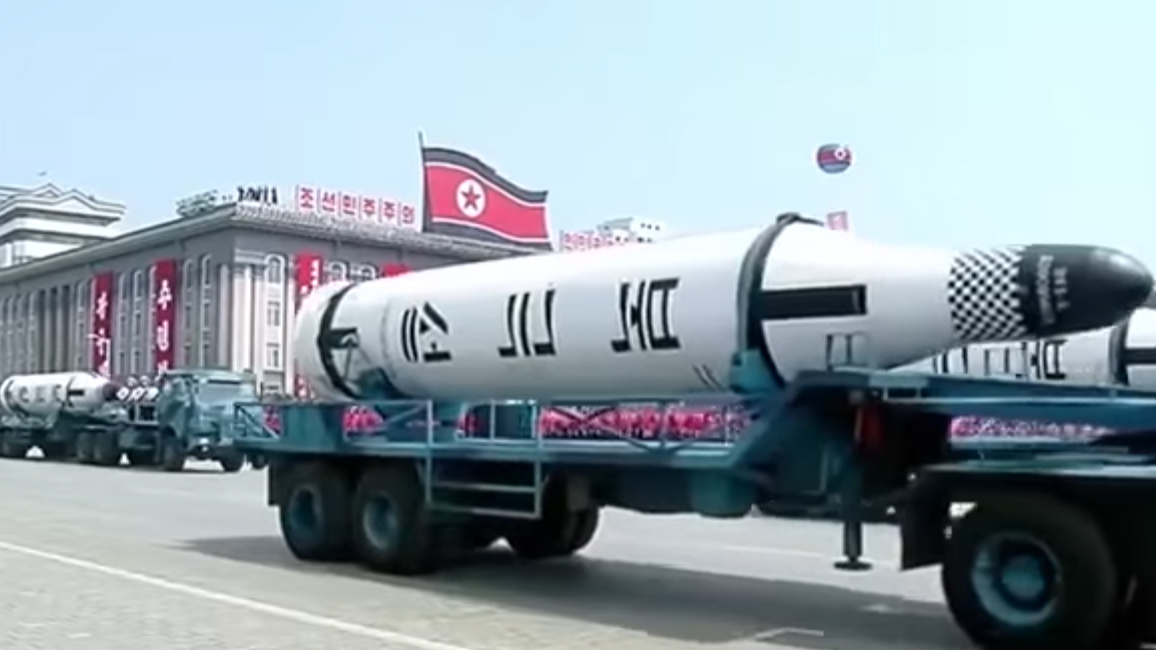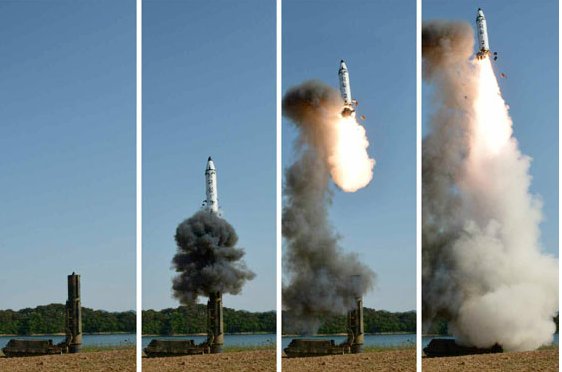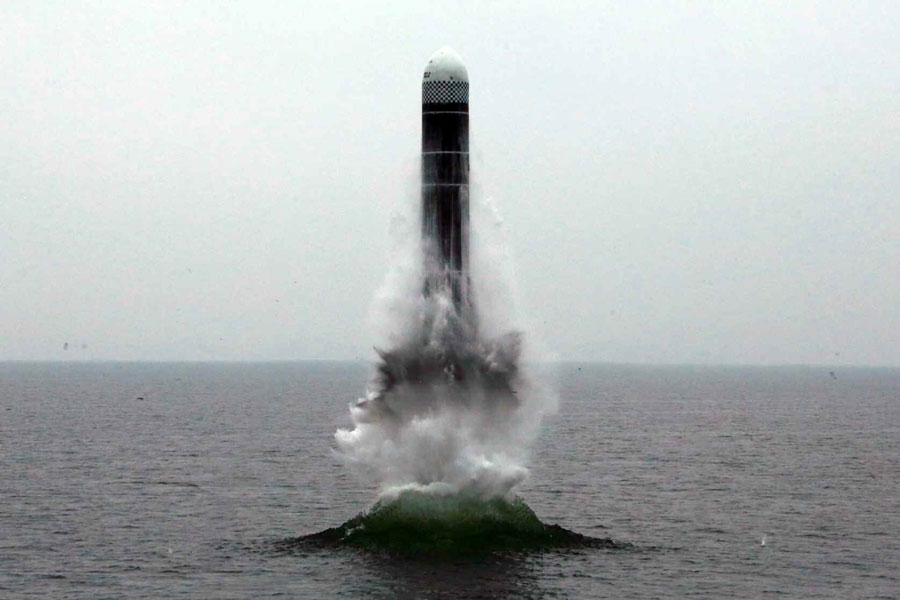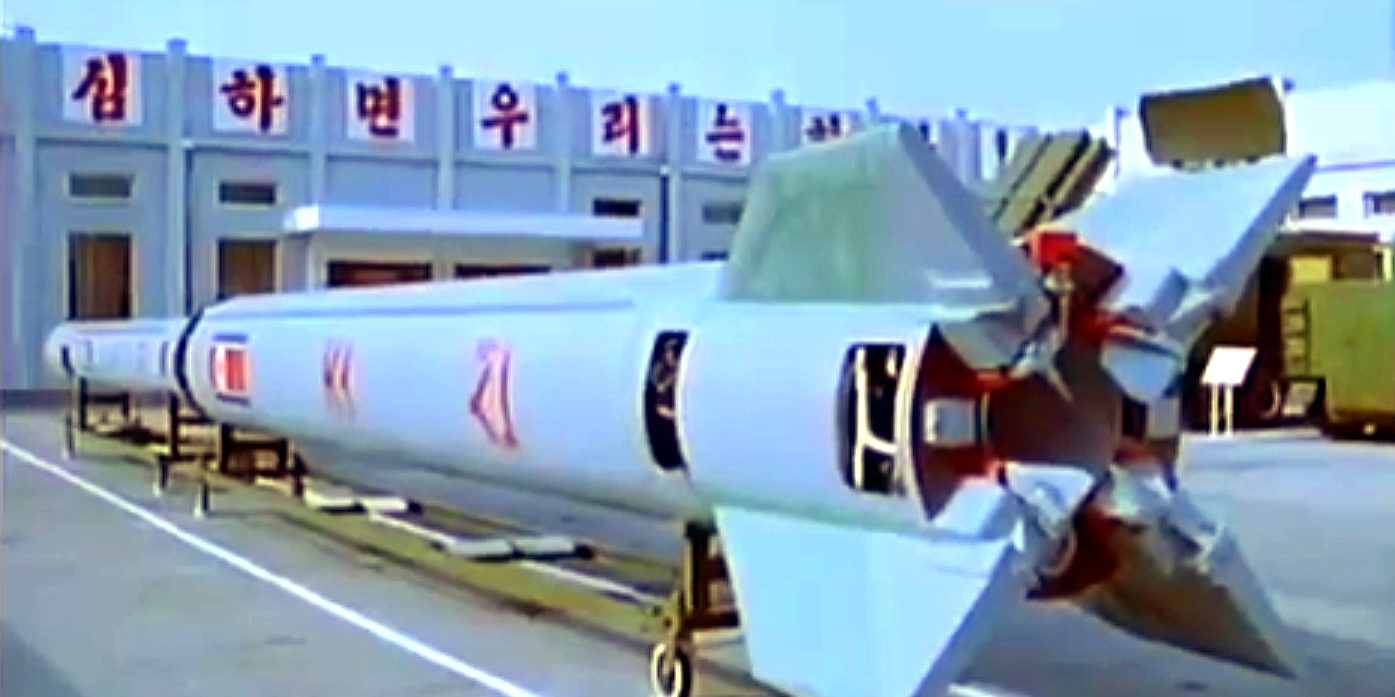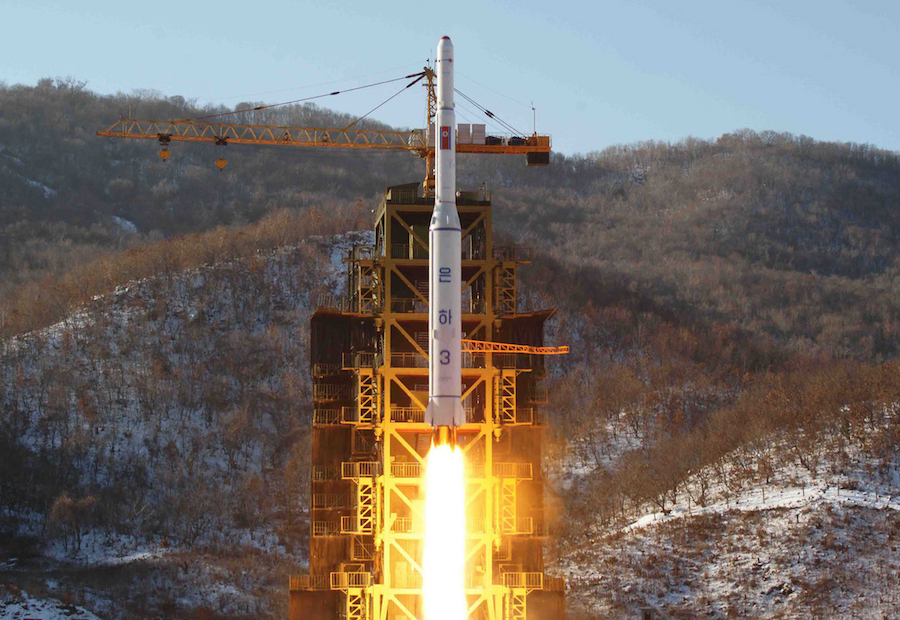A brief introduction to missiles
For more about missiles and non-proliferation, visit https://armscontrolcenter.org.
All information provided below is open-source and unclassified. It is intended for casual reference only.
missiles 101
Missiles are comprised of a warhead, a guidance system, and a propulsion system. They can be launched from many platforms, including ships (including submarines), aircraft, and vehicles. Missiles are also used for a variety of purposes including surface-to-surface, meaning they are launched from the ground towards a ground target, or surface-to-air, meaning they are launched at a hostile aircraft.
Warheads are the contents delivered by the missile and the containers surrounding them. Warheads may include high explosive bombs, sub-structures (also known as “bomblets”), chemical weapons, and nuclear bombs.
Guidance systems use both active and passive methods to ensure the missile reaches its target. Passive methods include launch altitude and speed (usually from an aircraft), and active methods include onboard engines and homing devices.
Propulsion systems are either jet or rocket engines.
All North Korean missiles are most likely nuclear warhead capable and can deliver warheads weighing in excess of 500kg.
Missiles tested in North Korea are under the purview of the Korean People’s Army Strategic Rocket Force. It mainly tests surface-to-surface missiles from silos and launch pads (mid- to long-range), vehicles (short range), and submarines (short- to mid-range).

Missile types tested in North Korea since 1984 include the following types:
Hwasong-5 (SCUD-B): in service since 1980s
Propulsion: Liquid rocket (operational range 300km)
Classification: Short Range Ballistic Missile (SRBM)
Guidance: Inertial
Launch Platform: Vehicle
image source: missiledefenseadvocacy.org
Hwasong-7 (AKA nodong-1, AKA SCUD-C): in service since early 1990s
Propulsion: Liquid rocket (operational range estimated 1250-1750km)
Classification: Medium Range Ballistic Missile (MRBM)
Guidance: Inertial
Launch Platform: Vehicle
image source: missilethreat.csis.org
Hwasong-8: in service since 2021
Propulsion: Liquid Rocket (operational range estimated 3200-6000km)
Classification: Unknown Ballistic Missile (see commentary)
Guidance: Maneuverable Reentry AKA “homing”-type
Launch Platform: Vehicle
image source: space.com/north-korea-tests-hypersonic-vehicle-hwasong-8
Hwasong-9 (AKA SCUD-ER): in service since 1990s
Propulsion: Liquid Rocket (operational range estimated 700-1000km)
Medium Range Ballistic Missile (MRBM)
Guidance: Inertial
Launch Platform: Vehicle
image source: KCNA official release
Hwasong-10 (AKA Musudan): in service since 2010
Propulsion: Liquid Rocket (operational range estimated 3000-4000km)
Classification: Medium Range Ballistic Missile (MRBM)
Guidance: Inertial
Launch Platform: Vehicle
image source: military-today.com/missiles
Hwasong-11 (KN-02): in service since 2008
Propulsion: Solid fuel rocket (operational range estimated 120-220km)
Classification: Short Range Ballistic Missile (SRBM)
Guidance: Inertial, optical correlation
Launch Platform: Vehicle
image source: missiledefenseadvocacy.org
Hwasong -12 (KN-17): in service since 2017
Propulsion: Liquid Rocket (operational range estimated 3700-6000km)
Classification: Medium Range Ballistic Missile (MRBM)
Guidance: Inertial
Launch Platform: Vehicle
image source: KCNA official release
Pukguksong-1 (KN-11):in service since 2015
Propulsion: Solid fuel rocket (operational range estimated 500-2500km depending on source)
Classification: Submarine Launched Ballistic Missile (SLBM)
Guidance: Unknown; based on Soviet R-27 which had a terminal guidance system integrated in its nose cone
Launch Platform: Submarine
image source: missilethreat.csis.org
Pukguksong-2 (KN-15): in service since 2016
Propulsion: Solid fuel rocket (operational range estimated 1200-2000km)
Classification: Medium Range Ballistic Missile (MRBM)
Guidance: Unknown
Launch Platform: Vehicle
image source: missilethreat.csis.org
Pukguksong-3 (KN-26): in service since 2019
Propulsion: Solid fuel rocket (operational range estimated 1700-2500km)
Classification: Submarine Launched Ballistic Missile (SLBM)
Guidance: Inertial
Launch Platform: Submarine
image source: missilethreat.csis.org
Taepodong-1: one launch on record in 2006
Propulsion: Liquid rocket
Launch Platform: Launch pad (static site)
Rocket Dimensions: estimated 30m tall, 2.2m diameter, 80 tonnes in weight
image source: KCNA official release
Taepodong-2 (Unha-3) expendable carrier rocket: in service since 1998
Propulsion: Liquid rocket
Launch Platform: Launch pad (static site)
Rocket Dimensions: 30m tall, 2.4m diameter, 21 tonnes in weight
image source: KCNA official release
FAQ: How are rockets and missiles different?
Generally, missiles are “smart” and rockets are “dumb.” A missile has a guidance system whereas a rocket can be fired at a calculated angle – meaning it will fire a predicted ballistic trajectory – or directly upwards, the way that rockets are launched into space.
FAQ: Is an ICBM a missile?
Yes – missiles are classified into short-range (less than 1000km), medium range (1000-3000km), intermediate-range (3000-5500km), and long-range(>5500km). An ICBM is a type of long-range missile called intercontinental because they fly much farther than 5500km – an ICBM fired from Russia could hit Chicago (9156km), for example.
FAQ: Do all countries test missiles?
Not all countries maintain an arsenal, and there are many international treaties limiting proliferation of long-range missile stockpiles...especially nuclear, biological, and chemical. Countries that keep them do test them. North Korea is the only country who tests missiles by firing towards or over an adversary (Japan), which is a clear violation of international law.

image courtesy of the National Air and Space Center.

